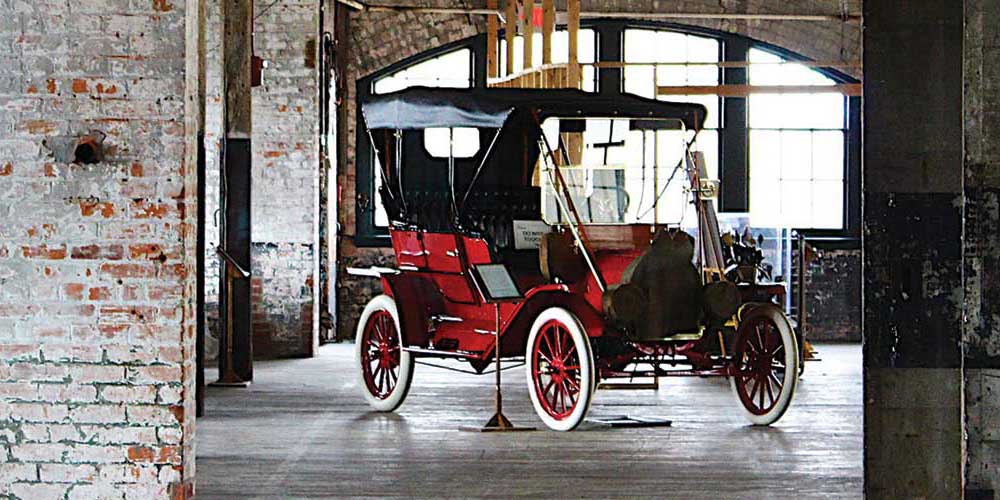By Robert Tate, Automotive Historian/Researcher
Images Courtesy of the National Automotive History Collection
Published 11.25.2014
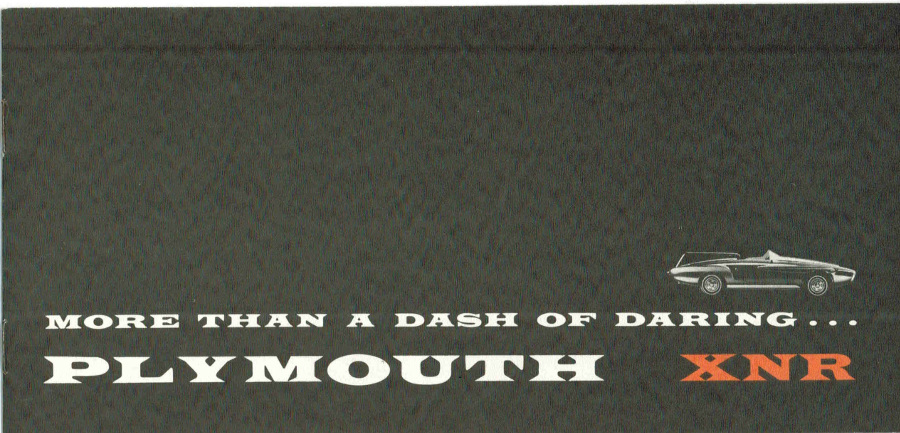 1960 Plymouth XNR brochure cover
1960 Plymouth XNR brochure cover
The XNR was a great looking show car that was introduced by the Chrysler Corporation on March 1, 1960. The name XNR was derived from the name of Virgil Exner, who was Chrysler's design chief.
The XNR was designed on a Plymouth Valiant chassis. The theme of the styling was called asymmetrical, having the upper design feature off-center and in line with the driver. The concept model offered seating space for both the driver and a passenger. It had a 106.5-inch wheelbase and a 46-inch overall height. It was also powered by a Valiant slant six-horsepower engine. The model was produced in Italian Red and the body was carefully hand built. Each detail of the XNR concept model had its own distinction which most people thoroughly enjoyed, and it was a great sensation on the Auto Show circuit around the country.
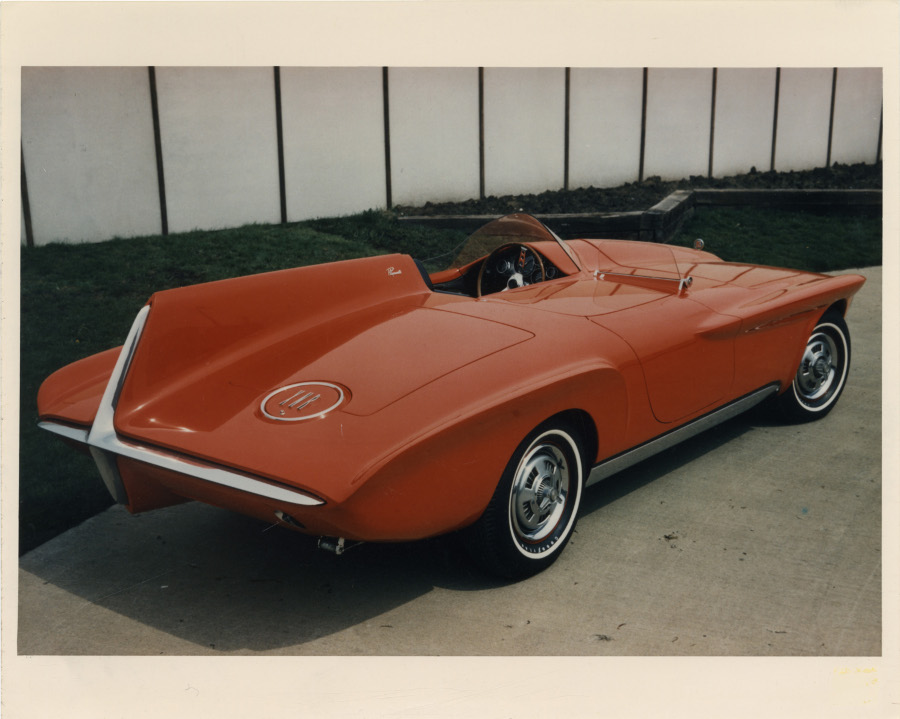 1960 Plymouth XNR show car
1960 Plymouth XNR show car
From the lean, low-rising slope of the air scoop to the muscular rear fin, the XNR concept model design was dominated by an off-center character line that gave the model a different look. While the concept model could accommodate two individuals, it was basically a one-man vehicle. There was an auxiliary windshield for the passenger, which at the time could be rotated flat to the car's top surface when not in use. The passenger seat was four inches lower than the driver's to keep the passenger below the wind resistance level.
The entire model was designed as an outer expression of inner strength and grace which was a wholly logical development of a long line of great looking concept cars that was created by Chrysler under Exner's great leadership. It demonstrated the adage that design should be functional. The interior of the XNR concept model was produced in black leather and aluminum material. The steering wheel was custom-designed for the driver, and behind the driver's seat was a padded headrest that flowed to the rear as a vertical stabilizing fin. It also had a leather-covered glove box which could be removed and used as a camera case. During the age of speed and sporty machines, the XNR was an ideal sports car. Chrysler said this about the XNR concept model: “The asymmetrical hood scoop/headrest and fin was created because the driver's head and shoulders would project into the wind on such a low car.”
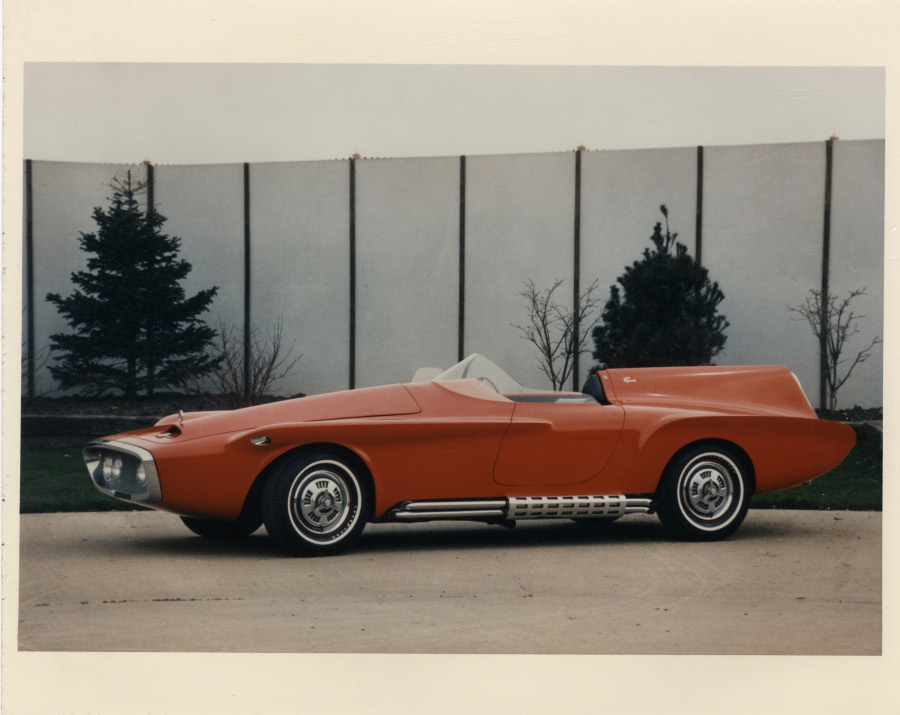 1960 Plymouth XNR show car
1960 Plymouth XNR show car
Unfortunately, Chrysler Corporation decided that the XNR concept was too radical and too expensive to build. With Exner leaving Chrysler in 1961, the model had no chance of being refined or mass produced. The XNR model was a striking concept car of the 1960s, and many people had admired its great design. After the XNR model had completed the auto show circuit, the model was shipped back to Ghia to avoid the possibility of being destroyed. However, Ghia sold the model to a Swiss businessman, who later sold it to Mohammad Reza Pahlavi, the Shah of Iran. In 1969, it was shipped to Kuwait, and in the mid-1970s, the model was shipped to a Beirut resident, Karim Eddie, who kept the XNR hidden during the war there. On August 12, 2012, the 1960 Plymouth XNR show car sold for $935,000 at RM auctions.
In conclusion, the XNR concept model introduced asymmetrical design, and its bumper-grille idea would reappear on the 1971 Plymouths. The XNR will always be remembered for its originality and is a great part of automotive history.
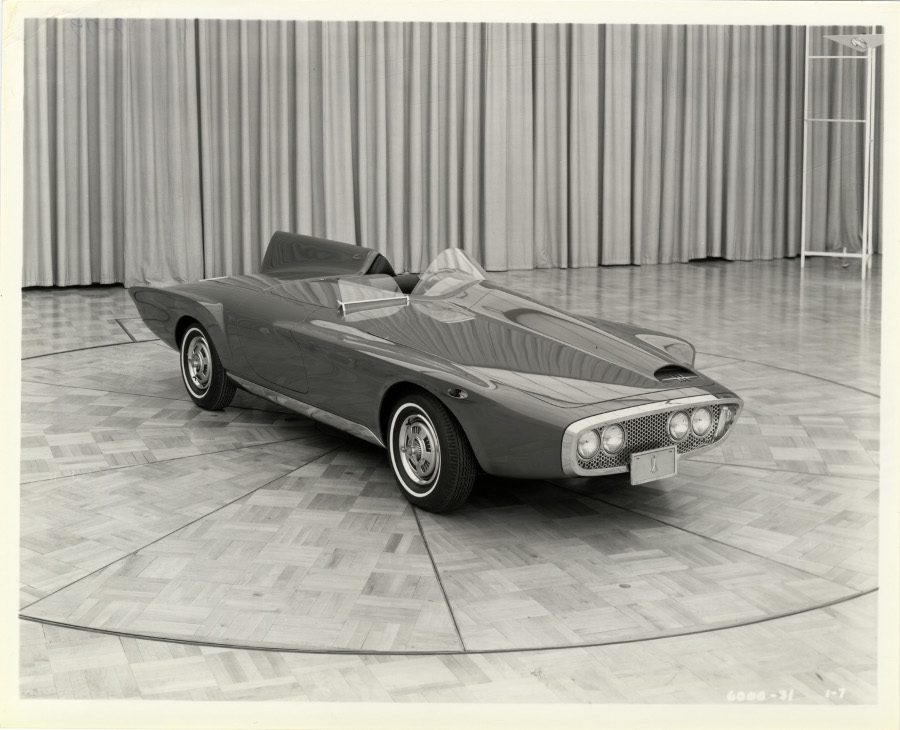 1960 Plymouth XNR show car
1960 Plymouth XNR show car
Bibliography
Butler, Don. “The Plymouth and DeSoto Story.” Crestline Publishing, 1978.
“Plymouth Idea Sports Machine.” Motor Trend. May, 1960.


